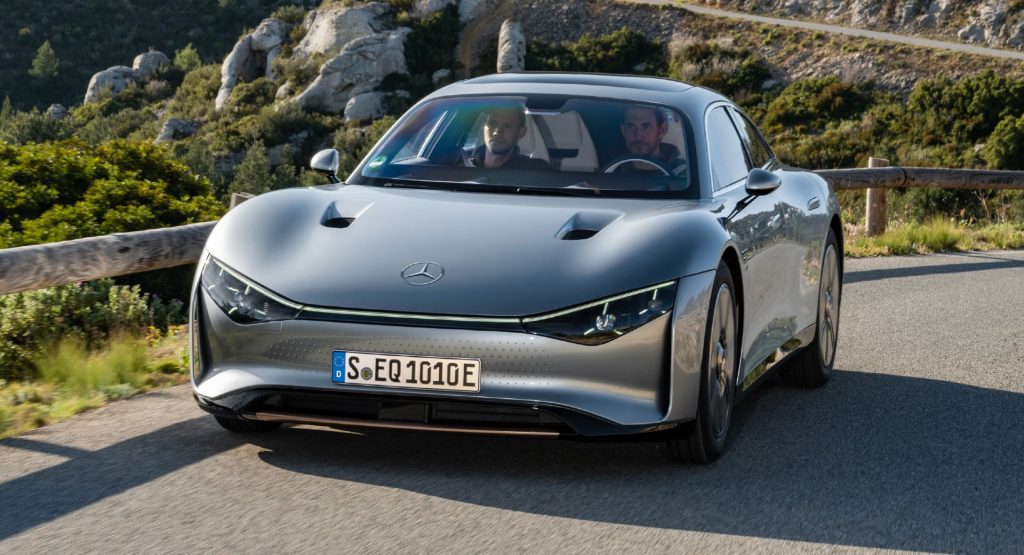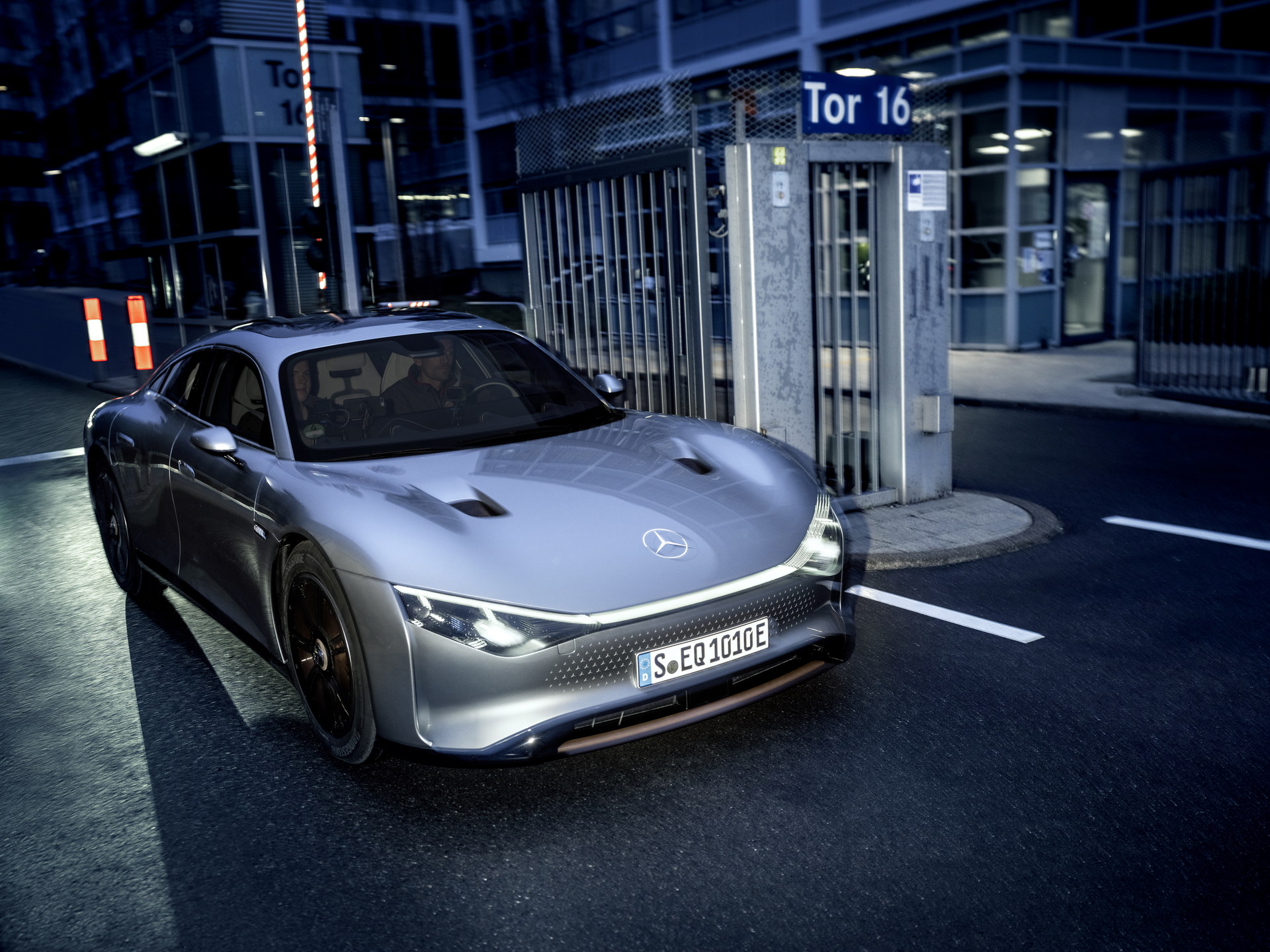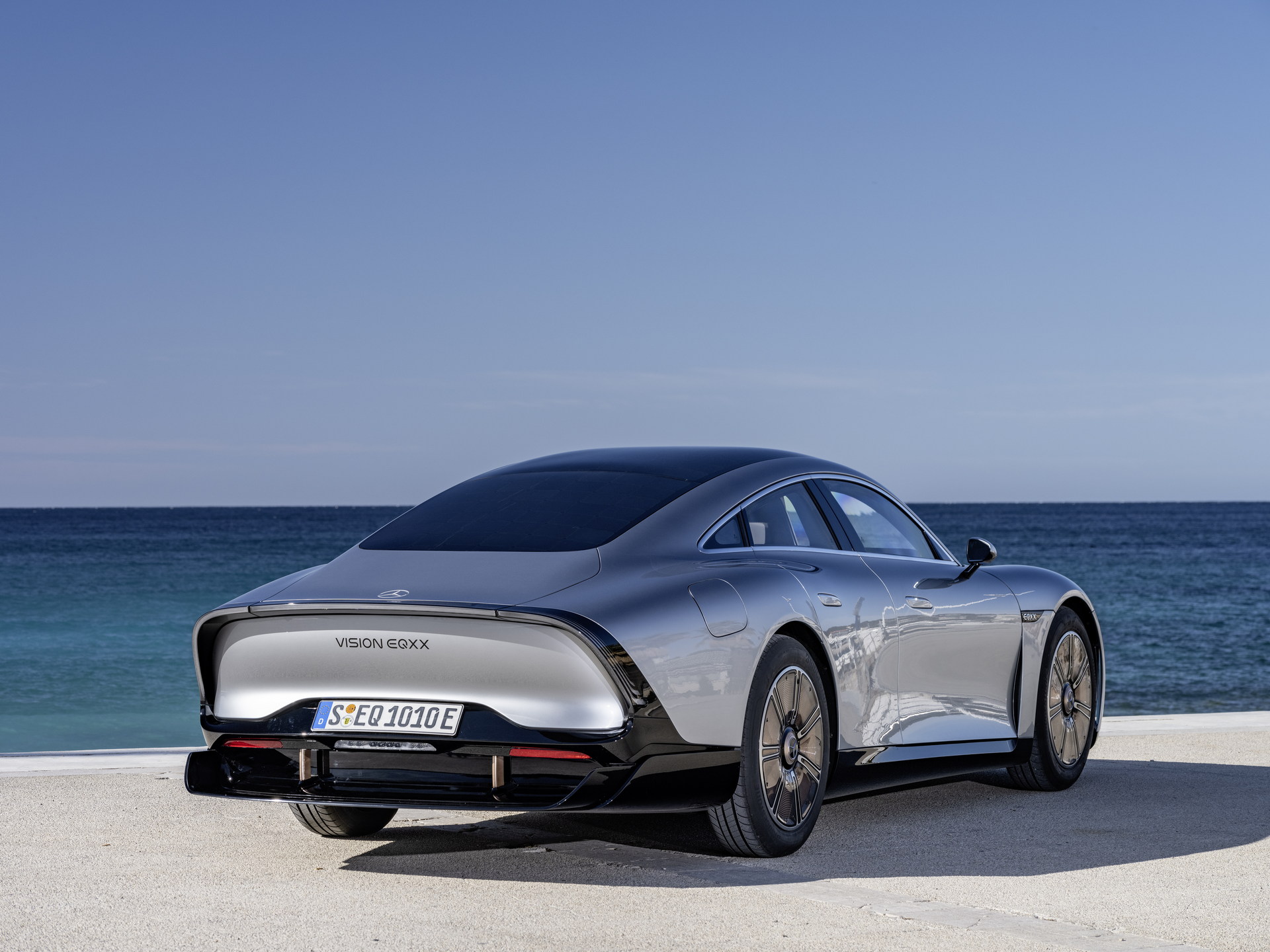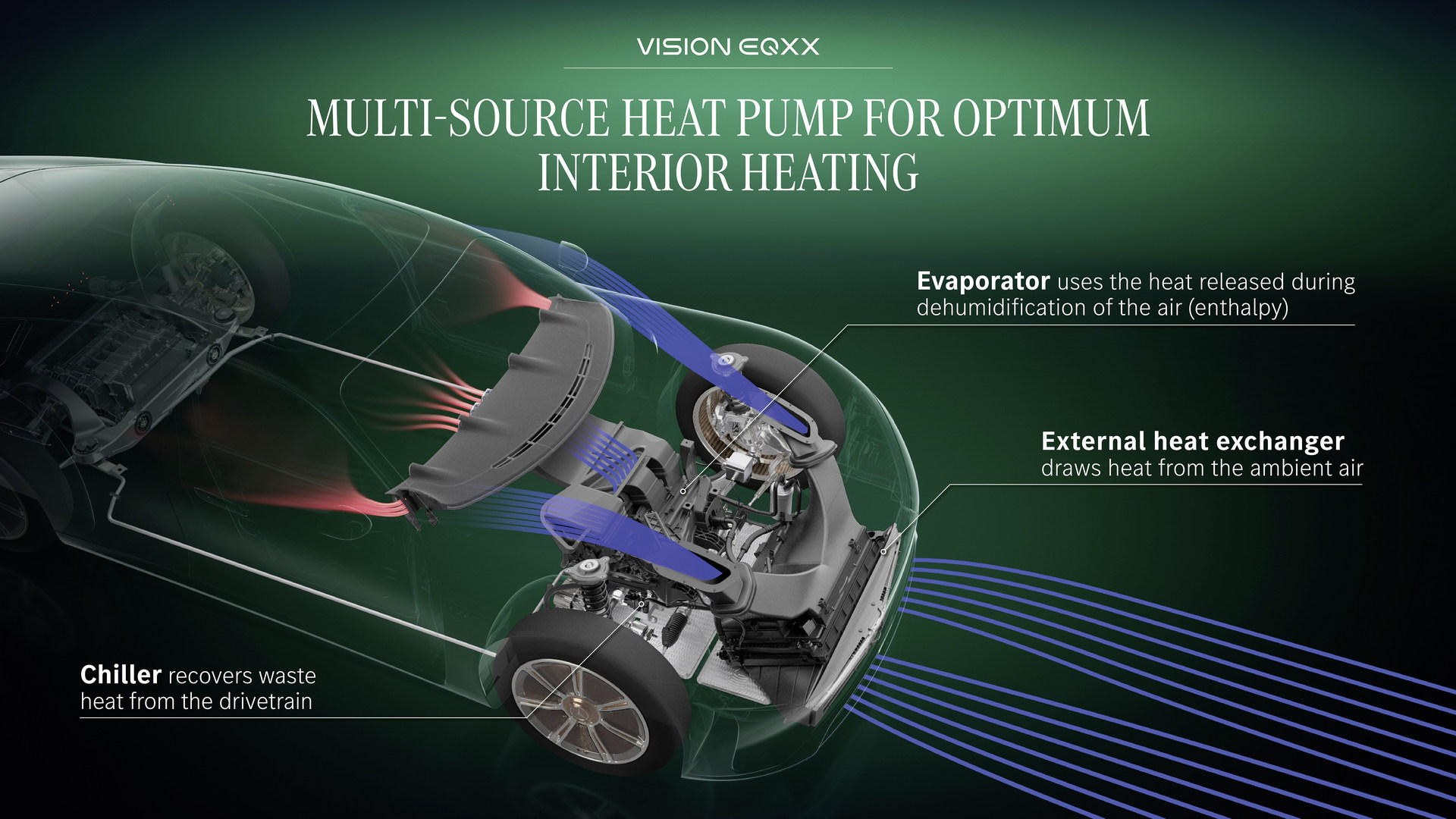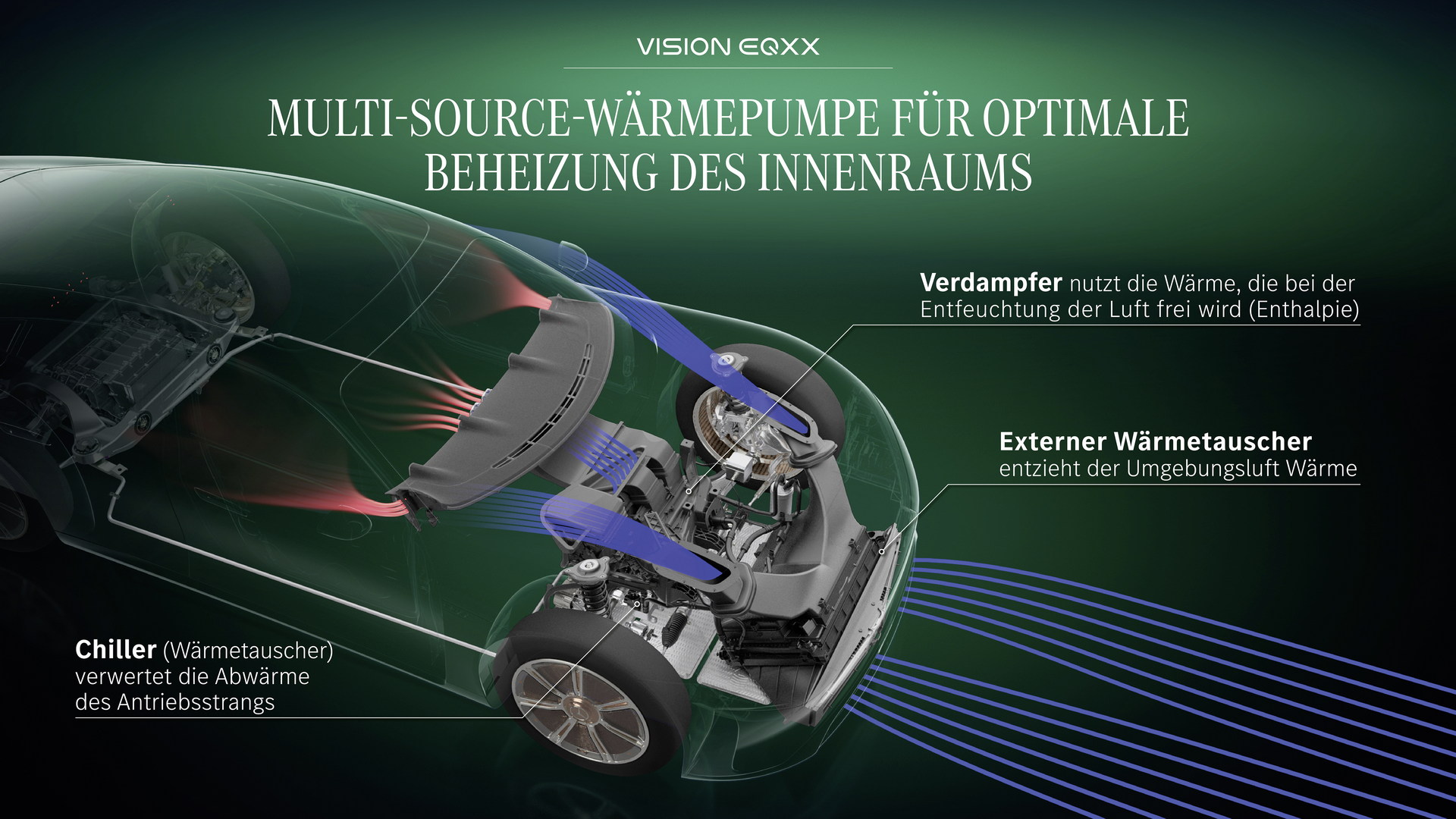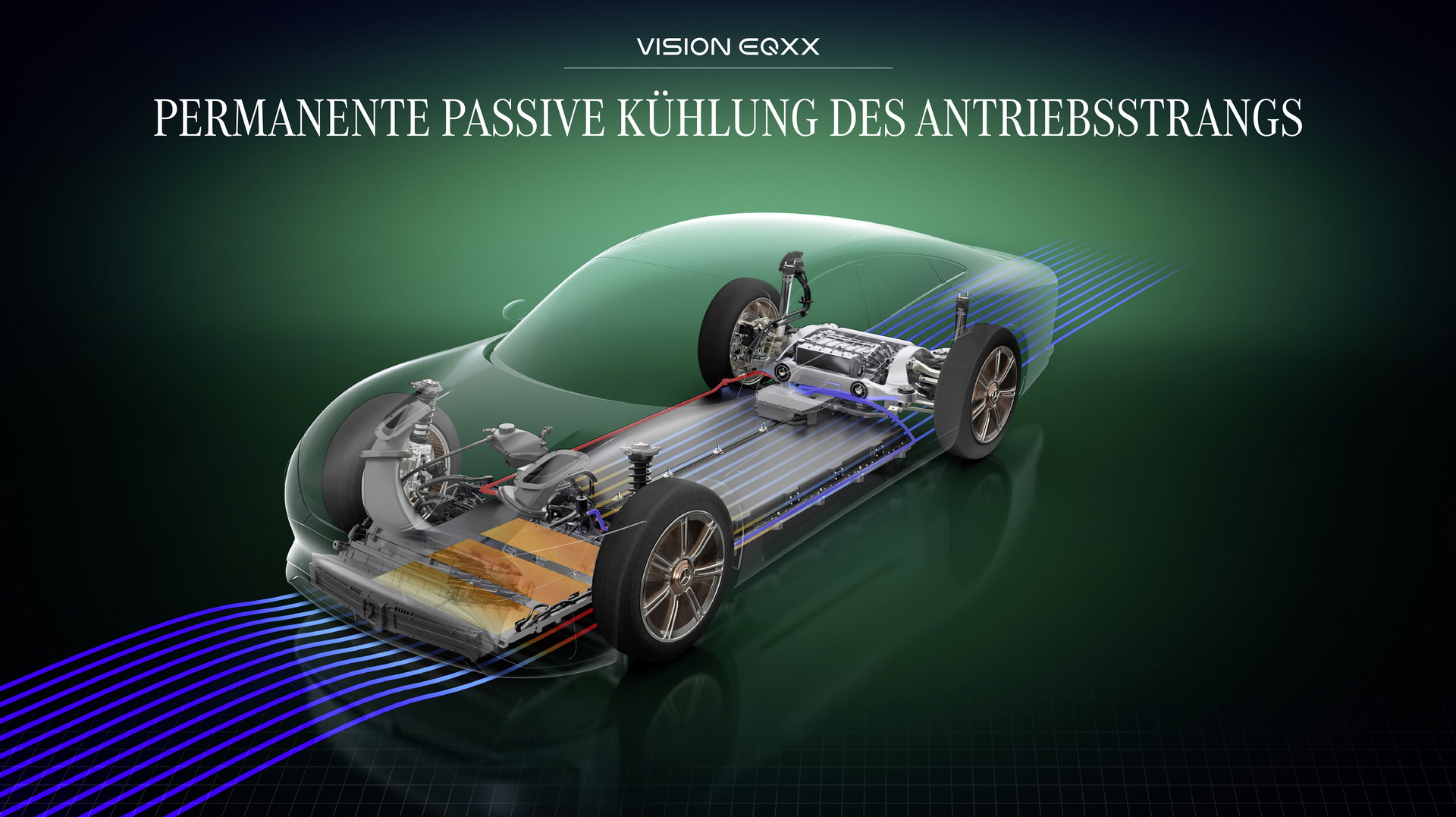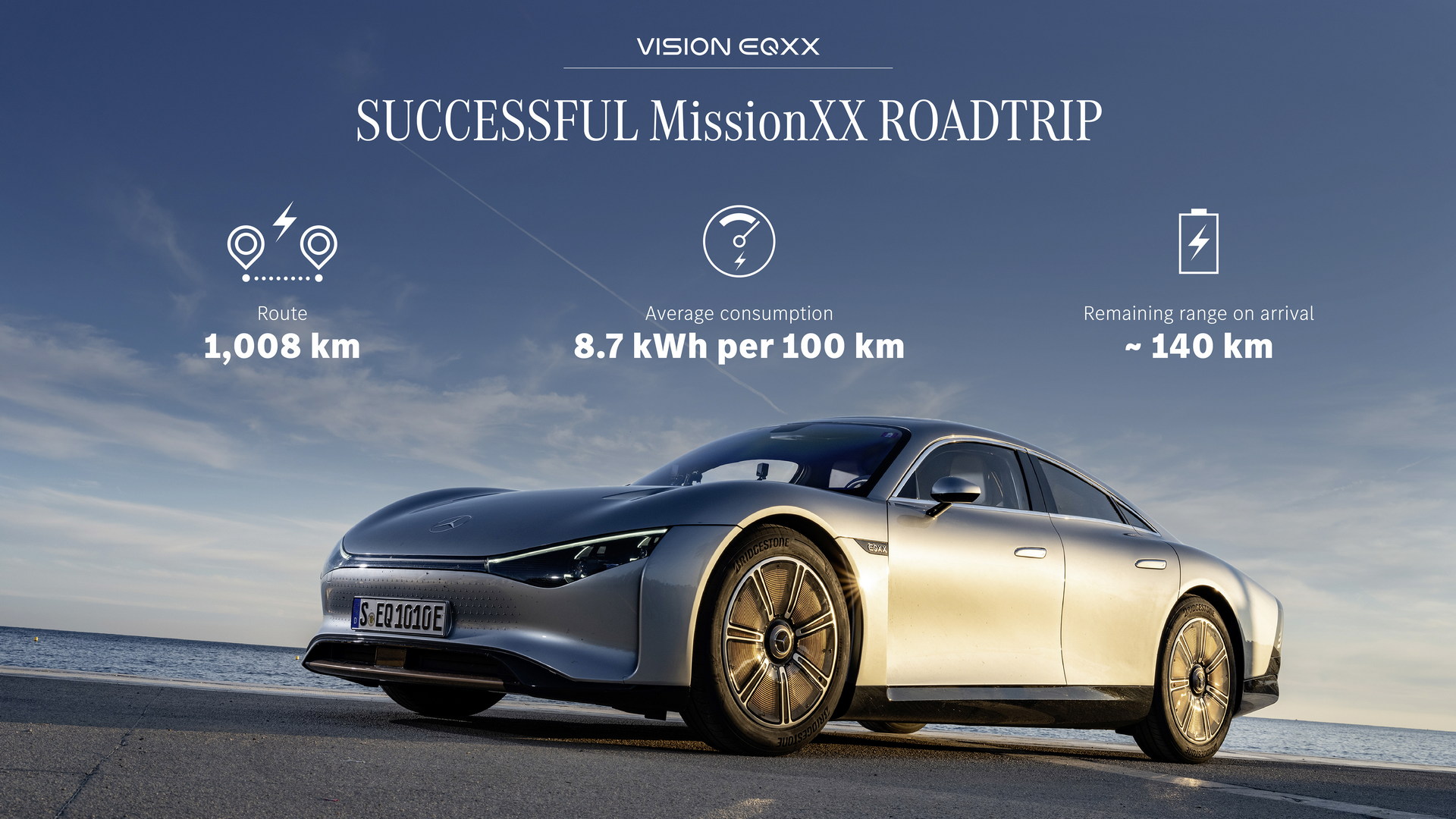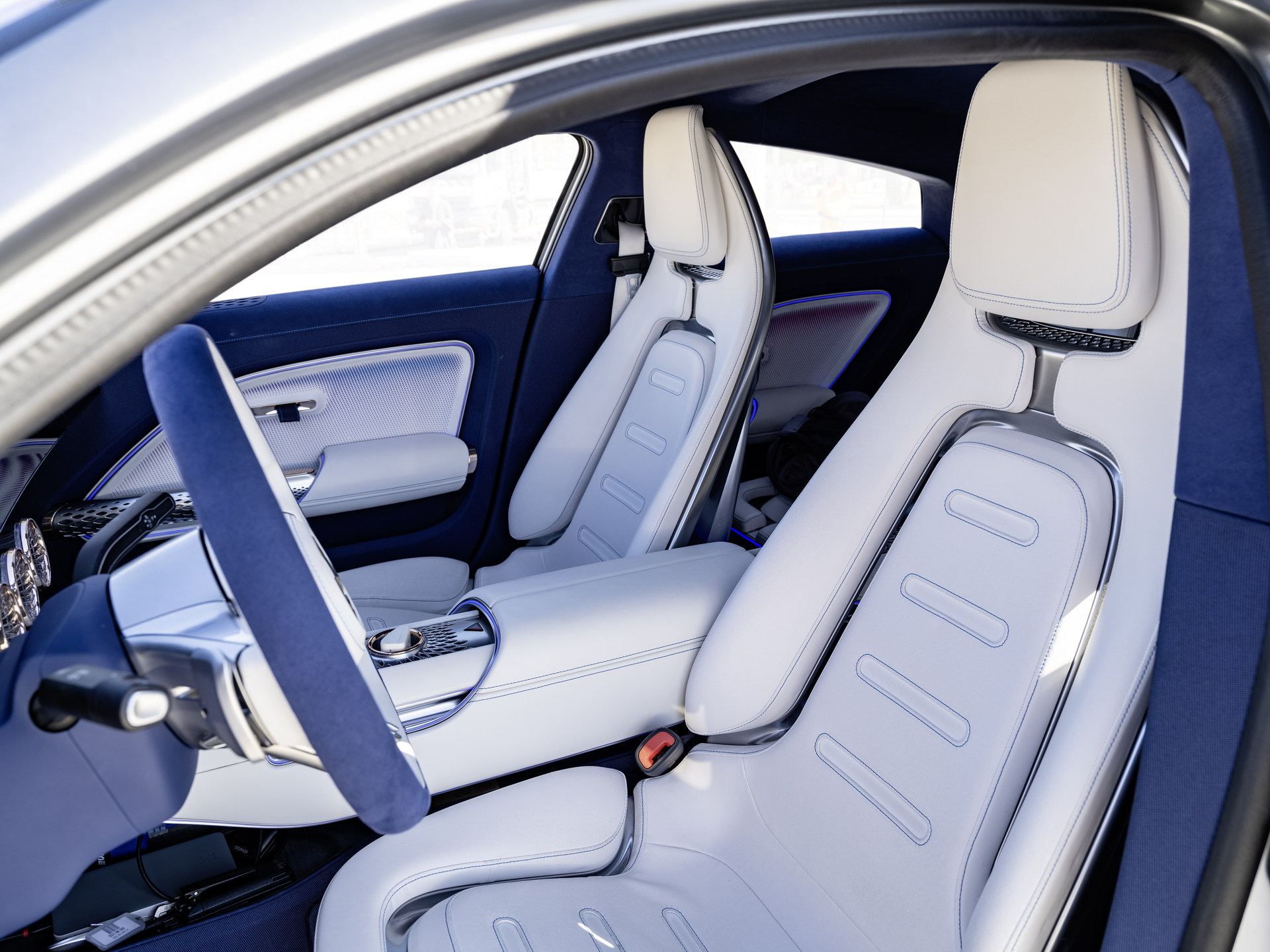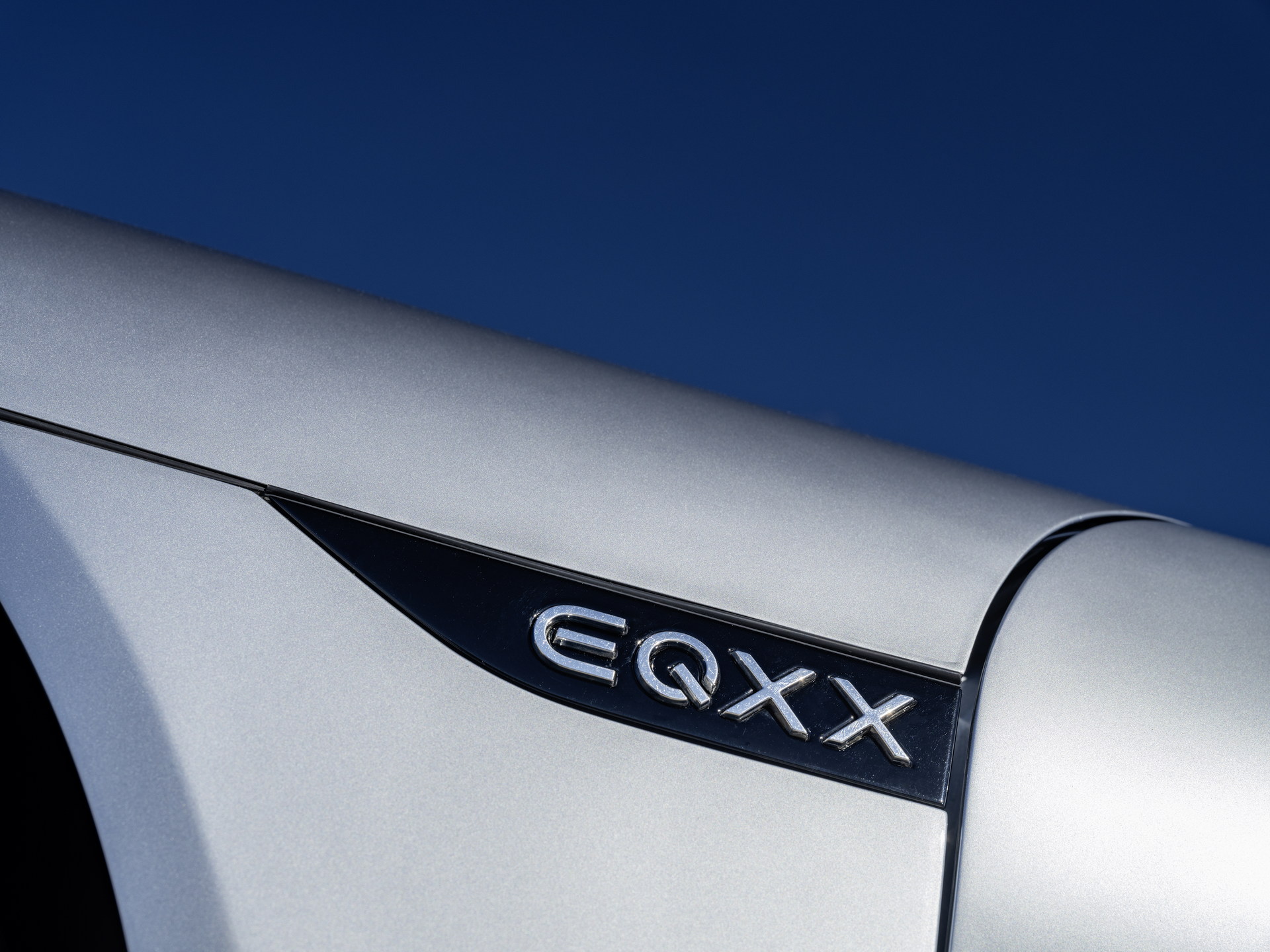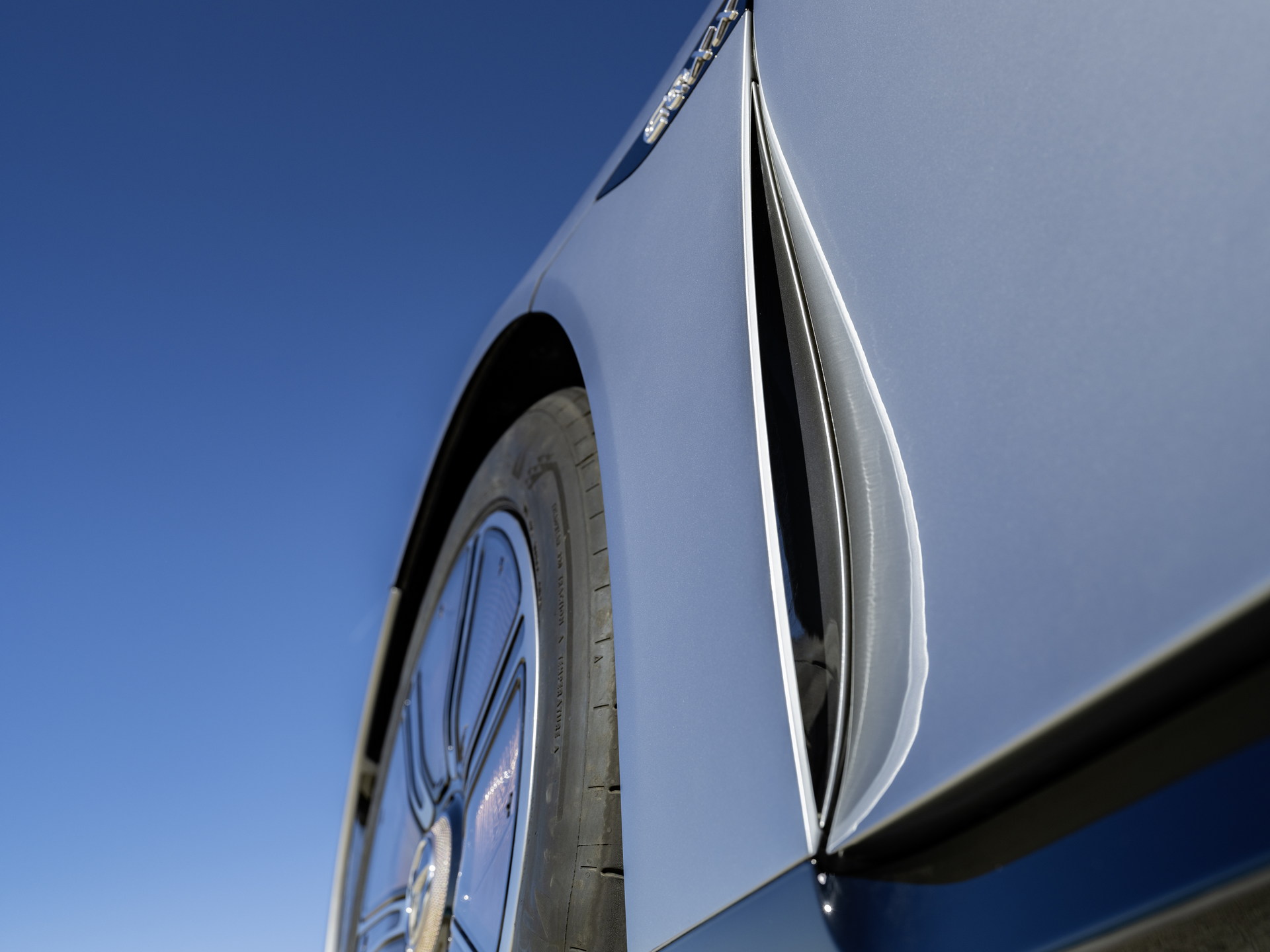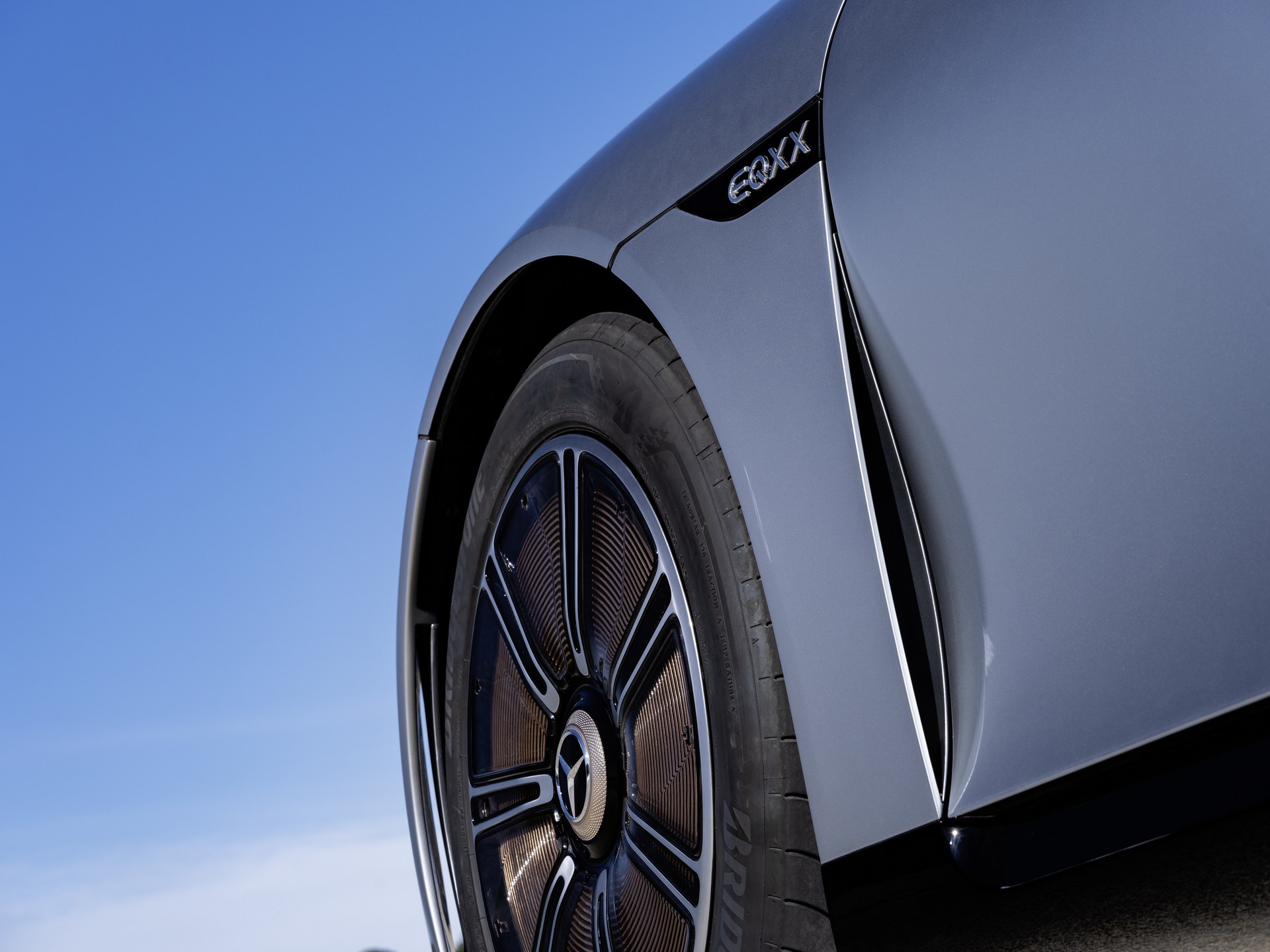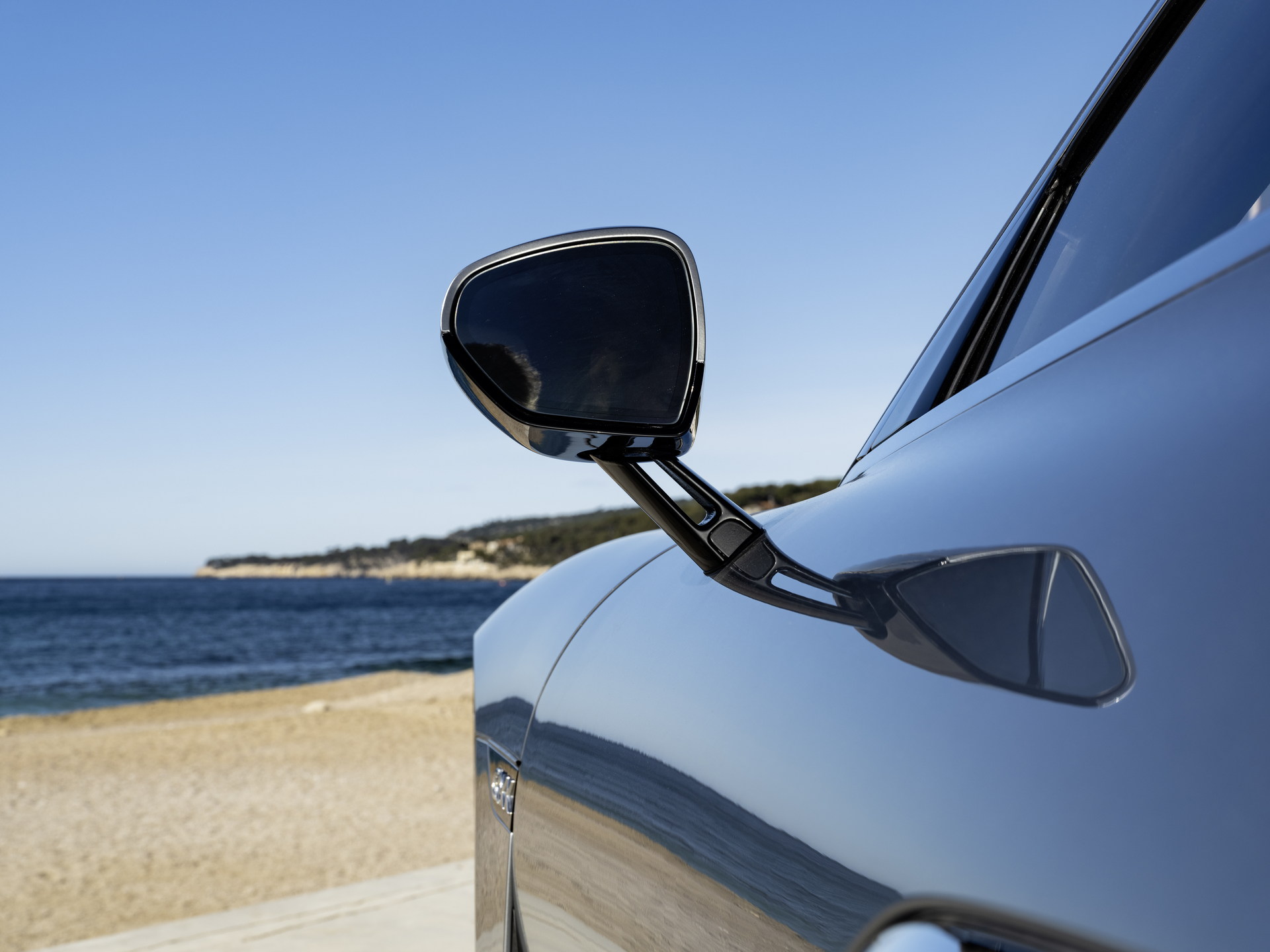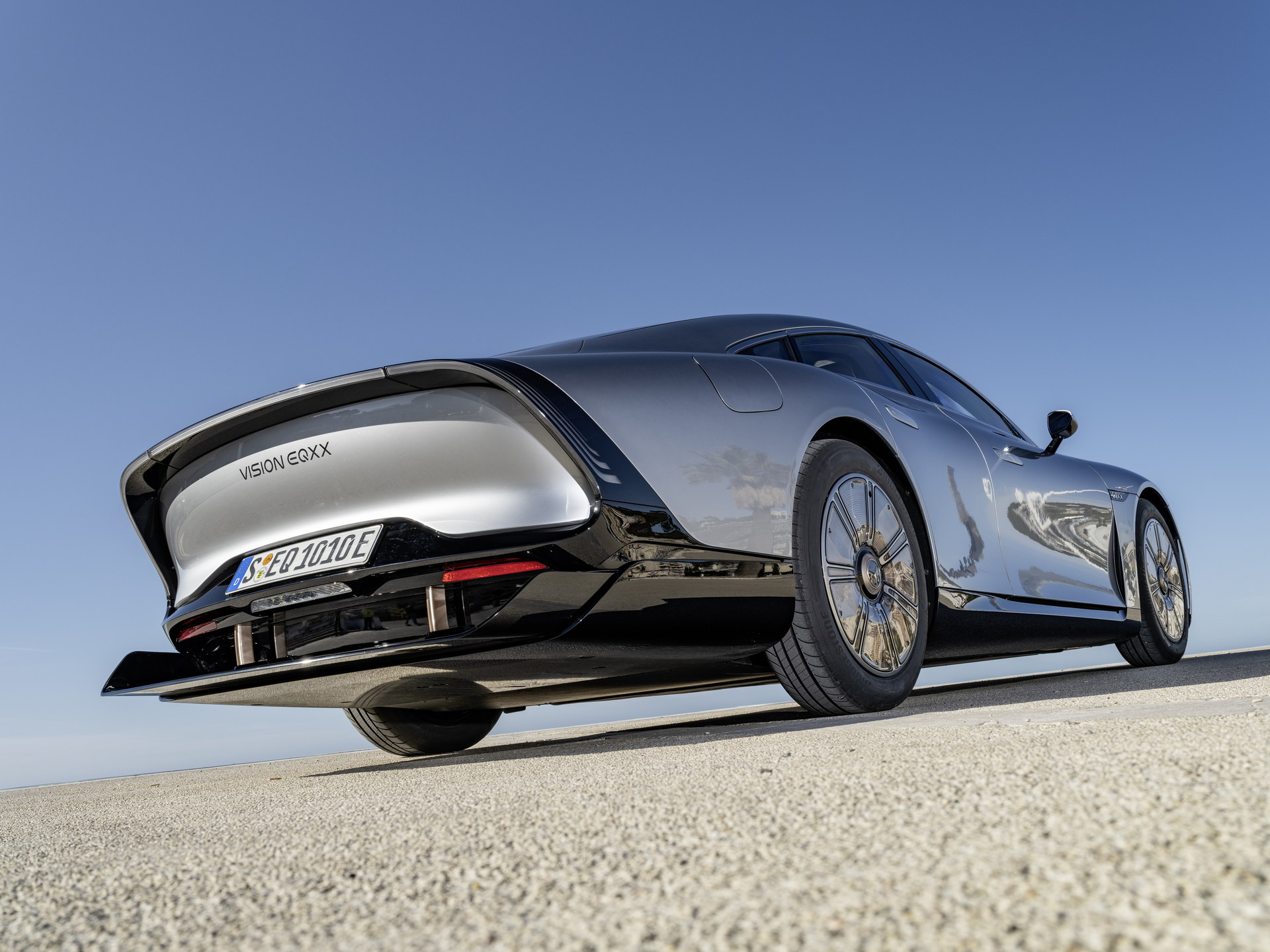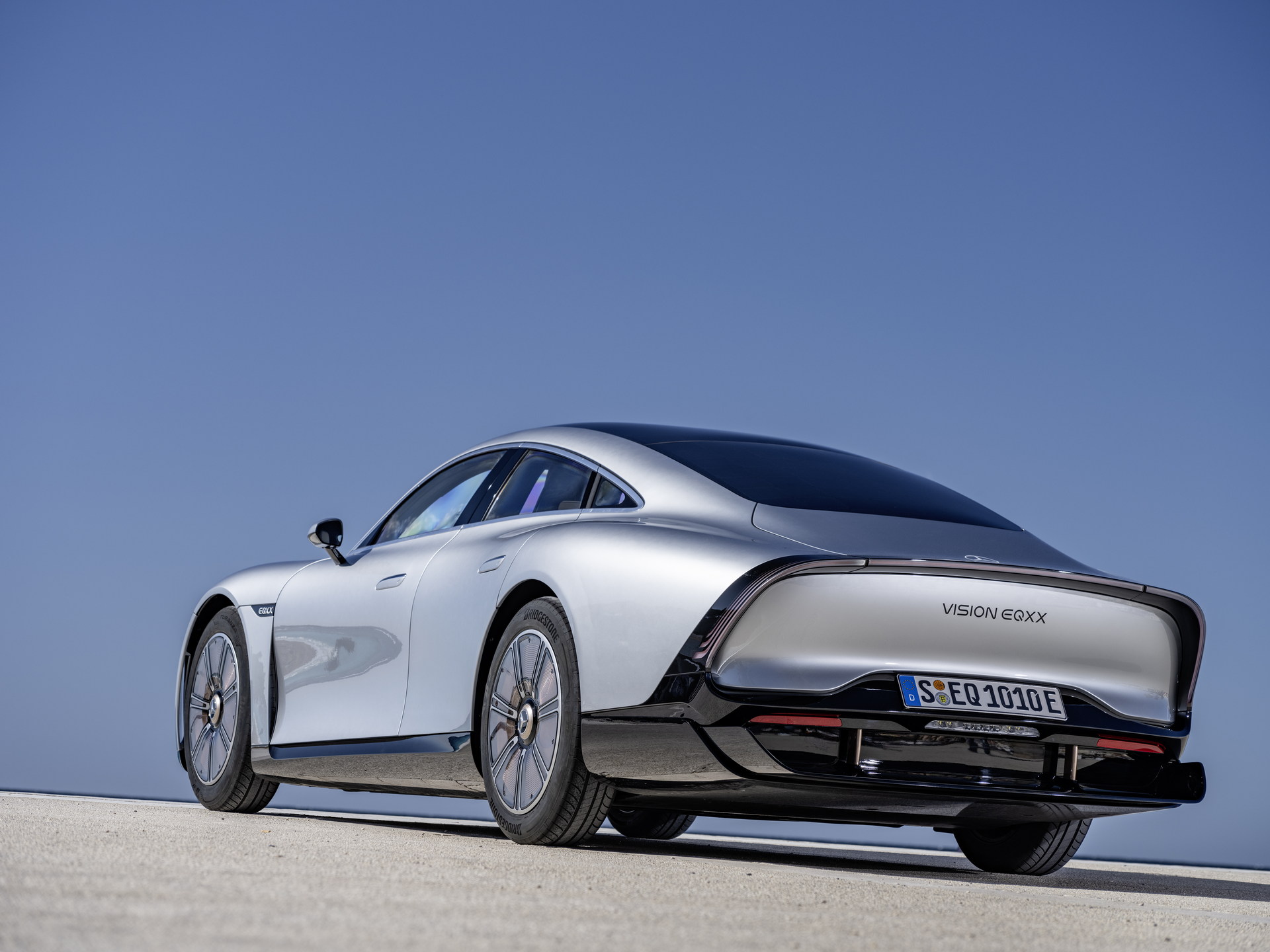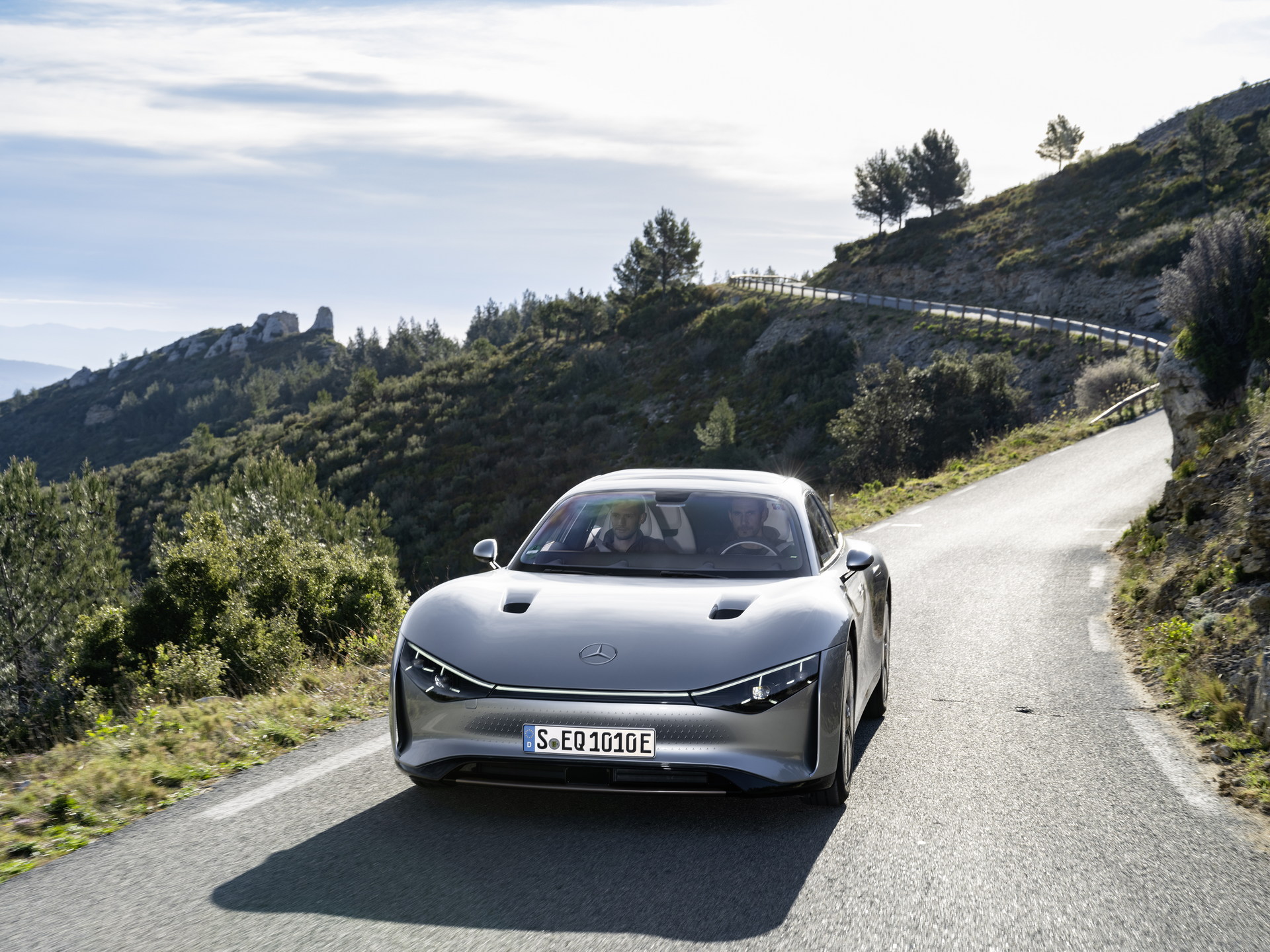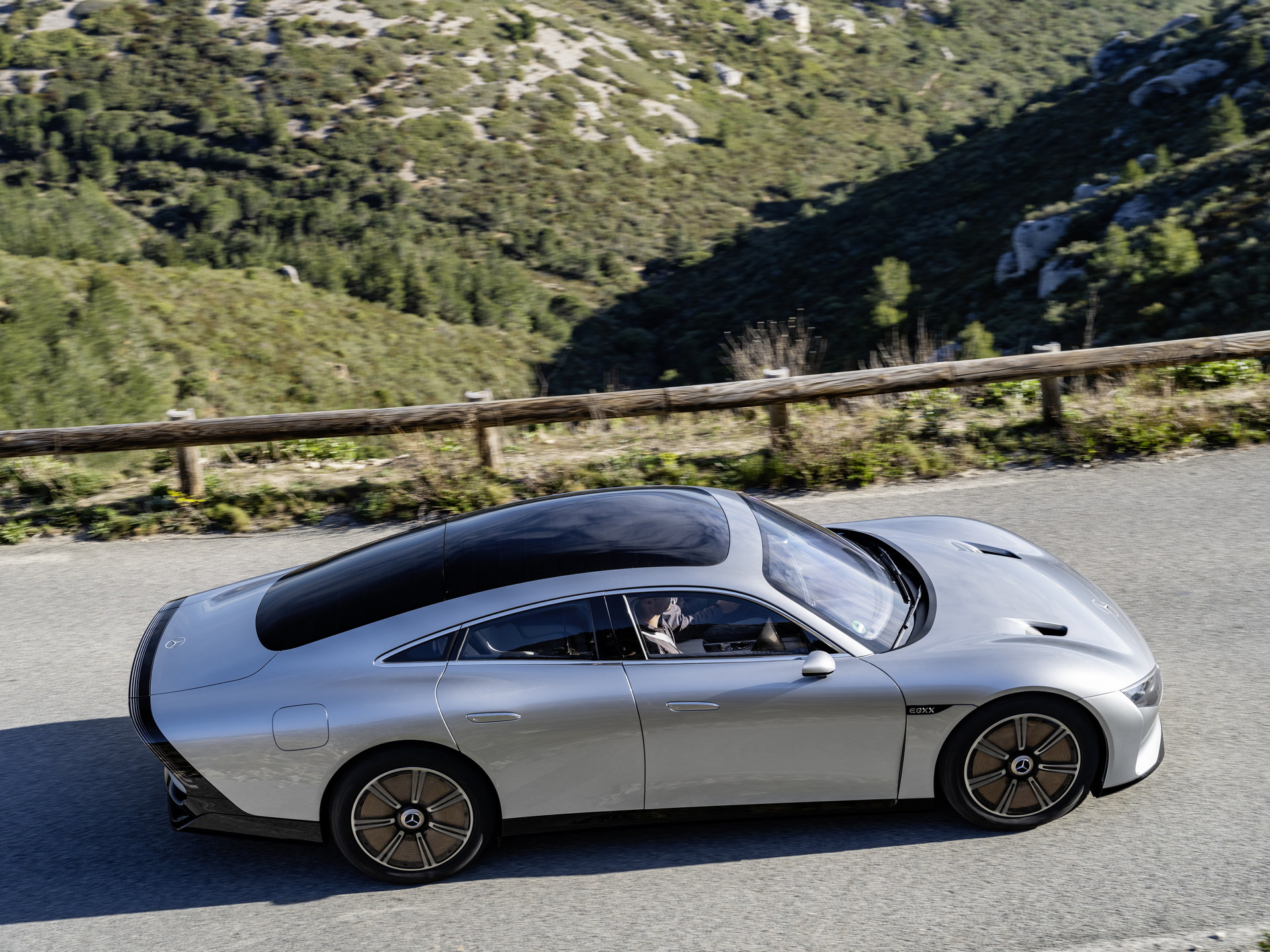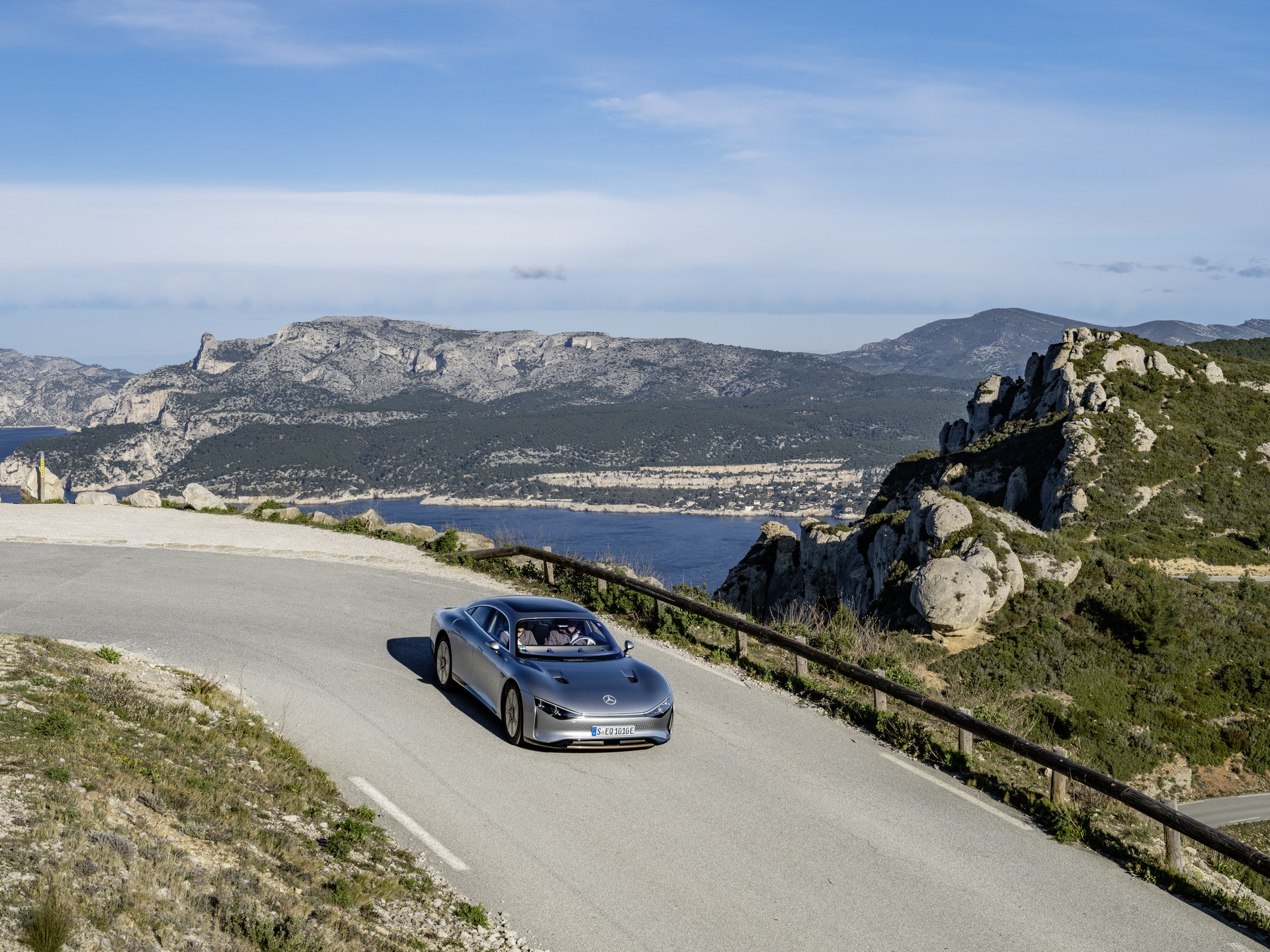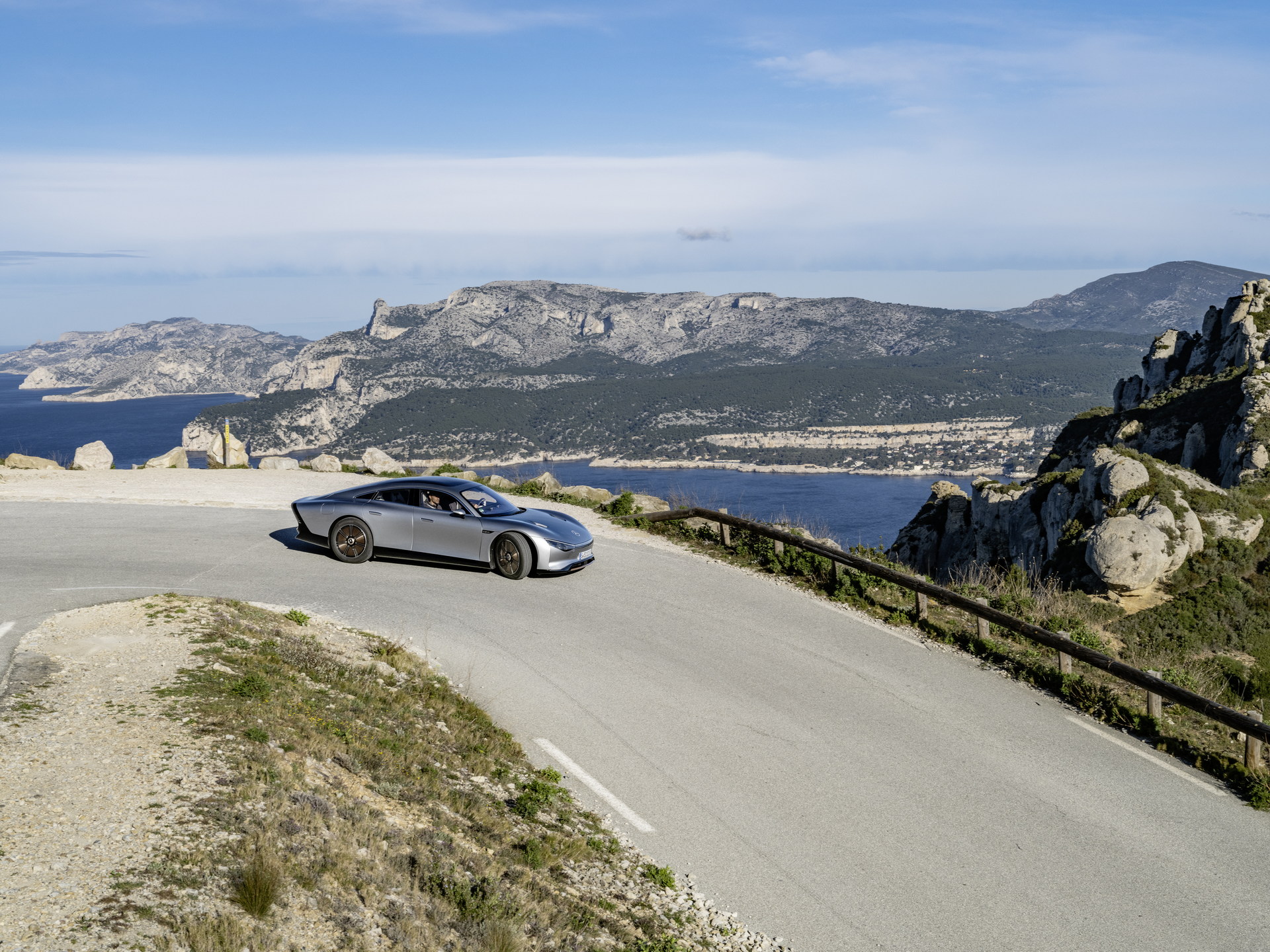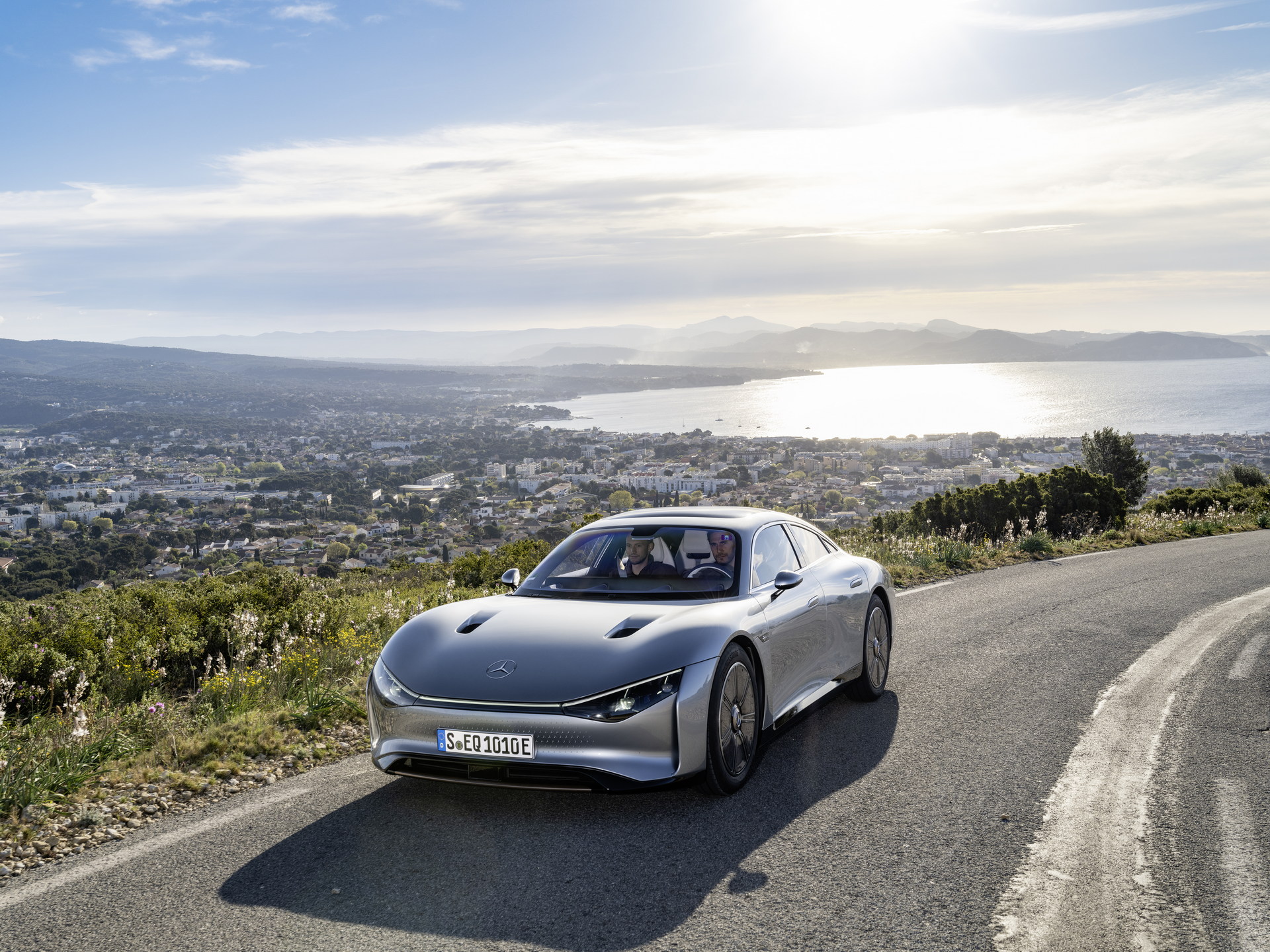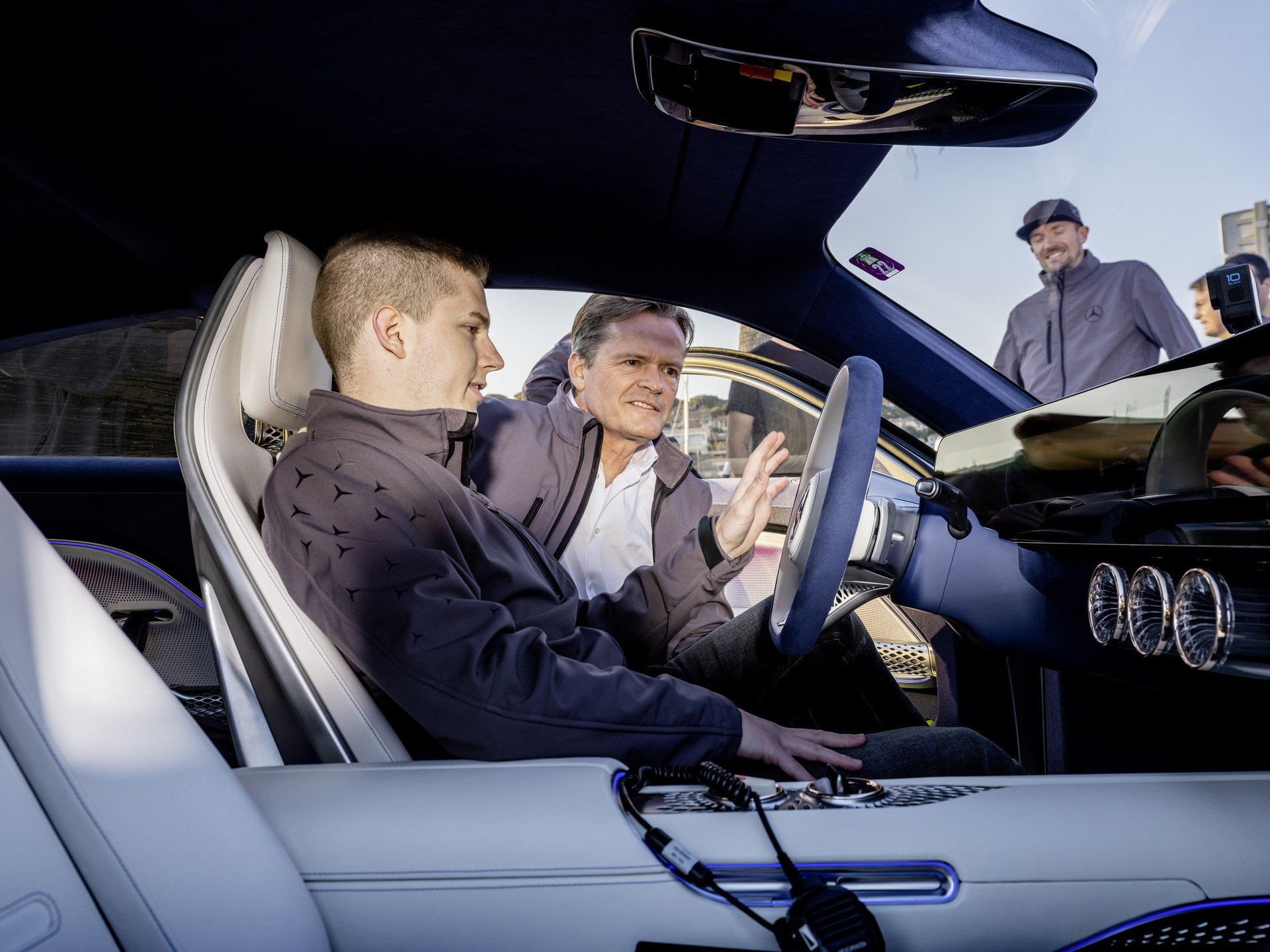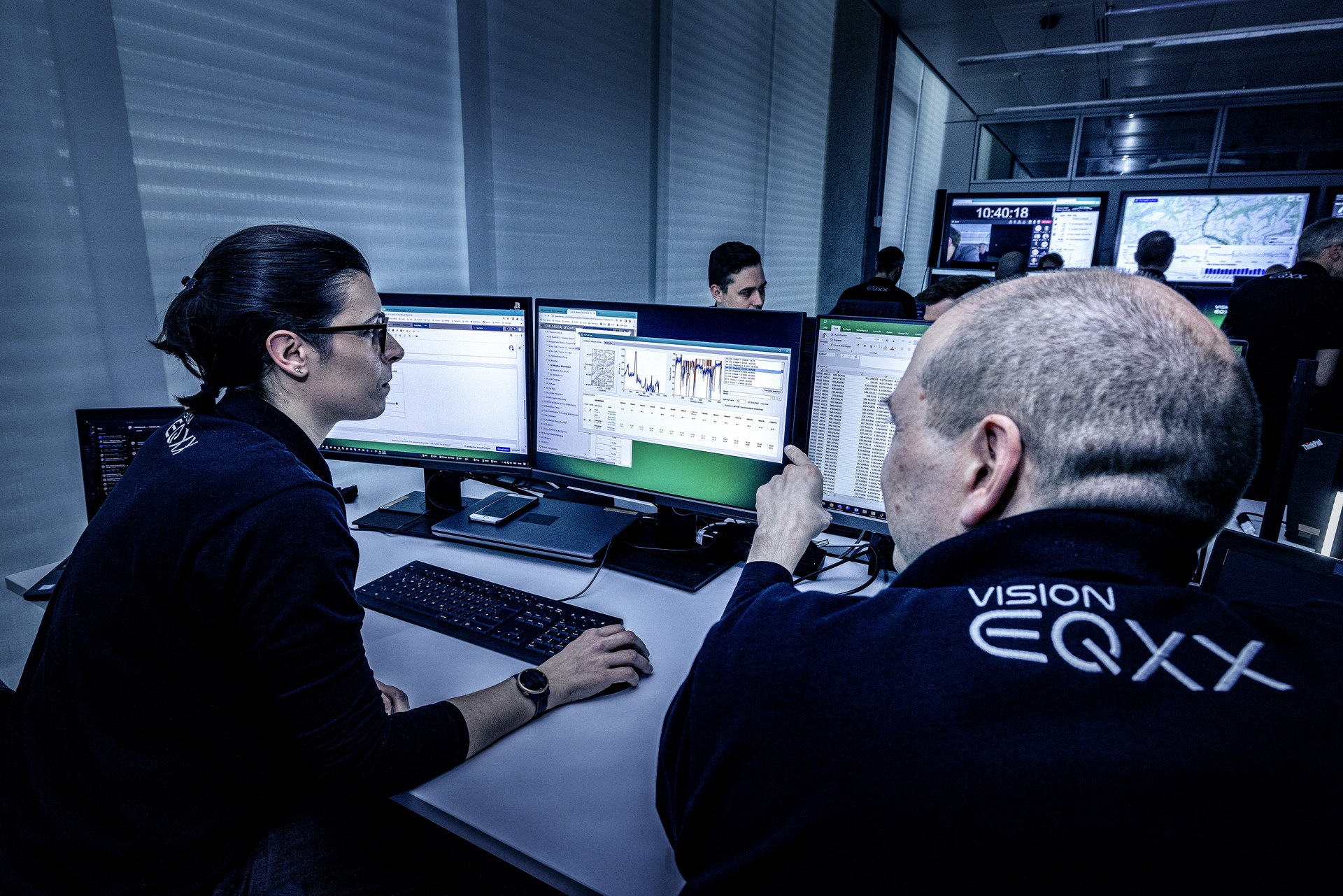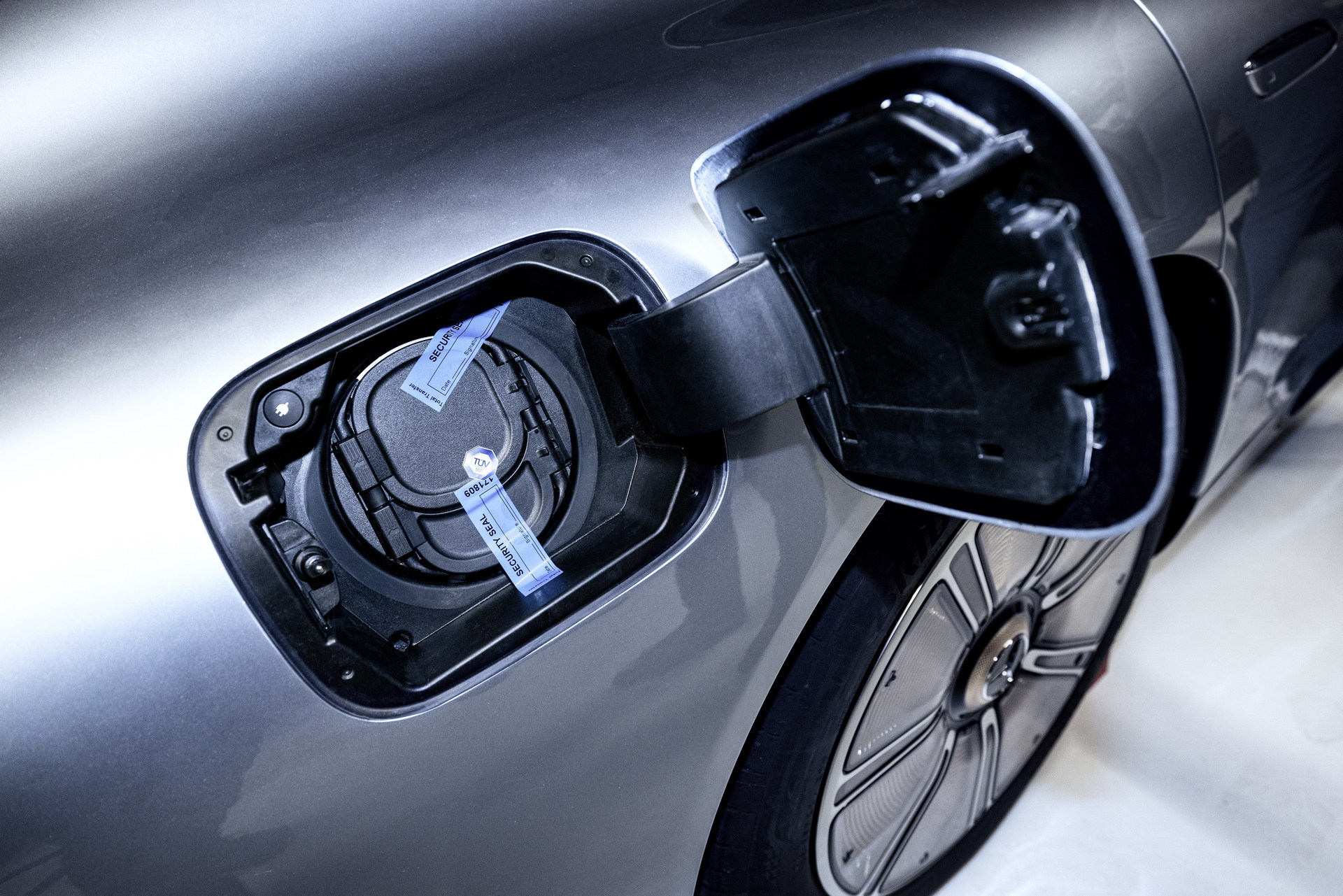The Mercedes-Benz EQXX presented at CES a few months ago was not just a concept car, but a fully driveable vehicle showcasing the technology of future production models. In that context, Mercedes put it to the ultimate test, completing a 1,008 km (626 miles) long roadtrip in a single charge and in real-life conditions, proving the record-breaking efficiency of the vehicle.
The concept’s journey started from the Sindelfingen R&D center near Stuttgart, Germany, crossed the Swiss Alps and Northern Italy, and ended up in the sunny Cassis on the Côte d’Azur, France. The entire trip was completed in 12 hours and 2 minutes overall, with 11 hours and 32 minutes driving time. What is impressive is that after covering 1,008 km (626 miles), the EQXX still had a remaining range of 140 km (87 miles) on the trip computer, with the battery at 15 percent. As for the average energy consumption, it was just 8.7 kWh/100 km which is incredibly low for a street-legal vehicle.
Read Also: Mercedes-Benz Vision EQXX’s Tech To Applied On Production Cars
The charging port remained sealed, and an independent expert from certification body TÜV Süd joined the ride lending credibility to the stunt. While most long-range proving efforts are completed at a lower pace, Mercedes said that the EQXX was driven near the speed limits, reaching 140 km/h (87 mph) on the German Autobahn, with an average speed of 87.4 km/h (54.3 mph) throughout the entire trip.
The weather conditions across Germany, Switzerland, Italy, and France were varying, with temperatures ranging from 3 to 18 degrees Celcius (37-64 degrees Fahrenheit). The trip included highway driving, mountain roads, long uphill stretches, and traffic-congested portions testing the EQXX’s efficiency in many different environments.
Read Also: Every New Mercedes Model Will Get An All-Electric Version, Starting In 2025
The impressive real-life range is made possible through a series of advancements in terms of aerodynamics, weight-saving measures, battery, and powertrain technology. The EQXX has a very low aero coefficient of 0.17 cd thanks to a small frontal area, a water-droplet shape with the rear track being narrower than the front, and clever use of aero components like active shutters and an active rear diffuser. Another very important factor is the low rolling-resistance Turanza Eco tires by Bridgestone, measuring 185/65 R 20 97 T with an efficiency rating unmatched by production vehicles. Finally, the solar roof with 117 solar cells feeding a 12-Volt battery that is powering auxiliary systems like the navigation added 2 percent of extra range or, in this case, a cool 25 km (15.5 miles).
The electric powertrain was developed with the help of the Mercedes-AMG Petronas F1 Team, producing 241 hp (180 kW / 245 PS) which is transmitted to the rear wheels. More importantly, the bespoke 900V lithium-ion battery pack has a capacity of 100 kWh which is similar to the production EQS, but with 50 percent less volume and 30 percent lower weight. To keep it at optimum temperatures, the thermal management system includes passive powertrain cooling using underbody airflow that doesn’t add drag. All of those features have resulted in what Mercedes calls “benchmark efficiency” bringing 95 percent of the battery’s energy to the wheels.
Ola Källenius, Chairman of the Board of Management of Mercedes-Benz Group AG, said: “We did it! Powering through more than 1,000 kilometers with ease on a single battery charge and a consumption of only 8.7 kWh/100 km in real-world traffic conditions. The VISION EQXX is the most efficient Mercedes ever built. The technology programme behind it marks a milestone in the development of electric vehicles.”
Markus Schäfer, Member of the Board of Management of Mercedes-Benz Group AG, Chief Technology Officer responsible for Development and Purchasing, added: “Many of the innovative developments are already being integrated into production, some of them in the next generation of modular architecture for compact and midsize Mercedes‑Benz vehicles”.
Τhose comments might point that some of the concept’s tech could trickle down to Mercedes’ new compact vehicle, possibly the fully electric equivalent of the C-Class and the smaller sibling to the already available EQE and EQS sedans which could be named the EQC. If that’s indeed the case, an EQC sedan would make for a great Tesla Model 3 competitor, especially if it integrates the lessons learned by the EQXX.




